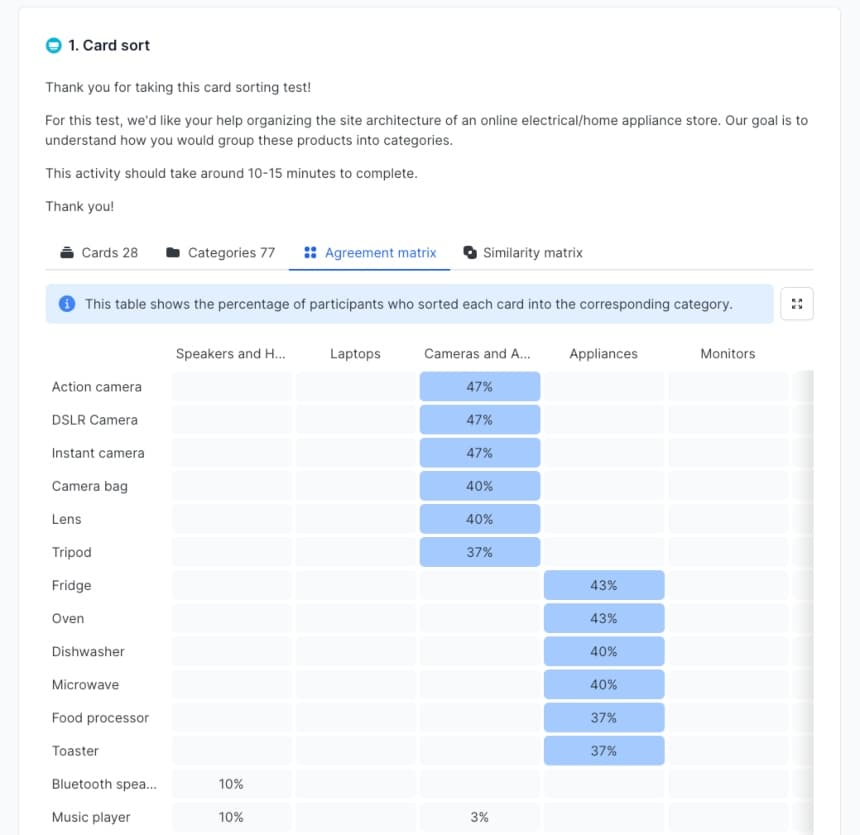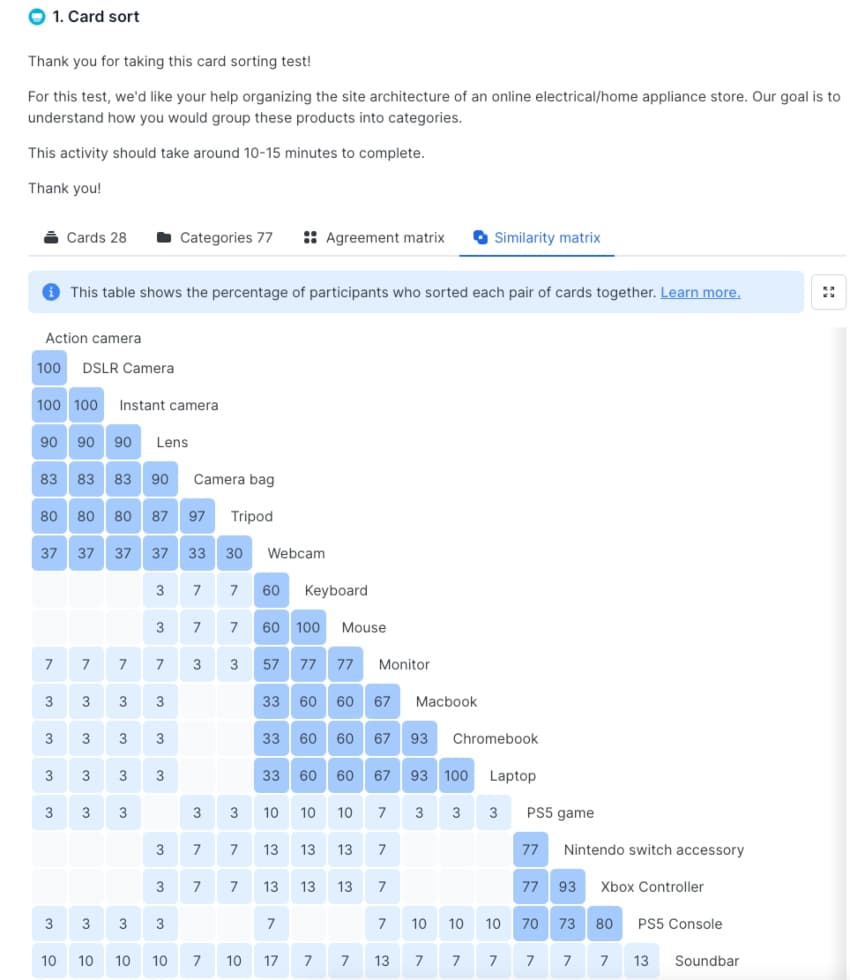How to analyze card sorting data
Learn how to sort and analyze card sorting data to inform information and content organization decisions.
Card Sorting Guide: Definition, Methods & Best Practices

Once all of your card sort results are in, it’s time to sort and analyze the data. These results can be:
Qualitative: The responses participants give to follow-up questions and the categories they define and label.
Quantitative: Which cards appeared together most often, and how often cards appeared in specific categories.
Most remote card sorting tools will include built-in reporting to help you sort and analyze your results. Begin by reviewing the results at a high level. Try to find common patterns in how the cards are sorted and (for open card sorts) the category names that are provided.
Step-by-step guide to analyzing card sorting data
1. Identify high-level patterns
Start by examining the overall patterns in the data. Look for common groupings of cards and frequent category names.
For closed card sorts, identify the most popular categories and the cards that consistently appear in these categories.
For open card sorts, focus on the variety and similarity of category names provided by participants.
2. Standardize categories
For open card sorts, take time to review and standardize categories with similar labels – look for different spellings, capitalizations, and wording.
Create consistency by merging similar categories. This helps in understanding the general consensus among participants.
3. Use built-in reporting tools
Leverage built-in reporting tools provided by your card sorting software.
On Lyssna, an agreement matrix shows the percentage of participants that placed each card into a category.

And open card sorts, a card sorting UX example can help illustrate how a similarity matrix shows how often pairs of cards are sorted into the same category, regardless of which specific category they were sorted into.

4. Identify clusters and outliers
When reviewing your data, look for clear clusters where cards are frequently placed together. This indicates strong associations between these items in the minds of your participants.
Identify outliers and cards that are spread across multiple categories. This variability can highlight different mental models and organizational preferences among participants.
5. Define and validate categories
If you ran an open card sort, use the observed data to define a list of standardized categories.
You can then validate these categories by conducting a closed card sort. This step ensures that your defined categories resonate well with a broader audience.
6. Combine qualitative and quantitative data
Use qualitative feedback from follow-up questions, an approach commonly seen in various types of qualitative research methods to understand the reasoning behind certain groupings and categories. Use it in combination with quantitative data, which can be gathered through various types of quantitative research designs, to get a holistic understanding of user behavior and preferences.
7. Communicate your findings
Compile your findings into a report. Highlight key patterns, standardized categories, and any significant outliers or discrepancies.
Share your findings and recommendations with your team to inform decisions about structuring content on your site.
8. Make data-driven decisions
Use the analyzed data to make confident decisions about information architecture, navigation, and content organization.
Make sure that the final structure aligns with the mental models and preferences of your target audience.
By now, you should have valuable information to share with your team about your target audience and can make confident decisions about structuring the content on your site.
This structured approach to analyzing card sorting data helps you to derive meaningful insights that can significantly enhance the user experience on your platform.
